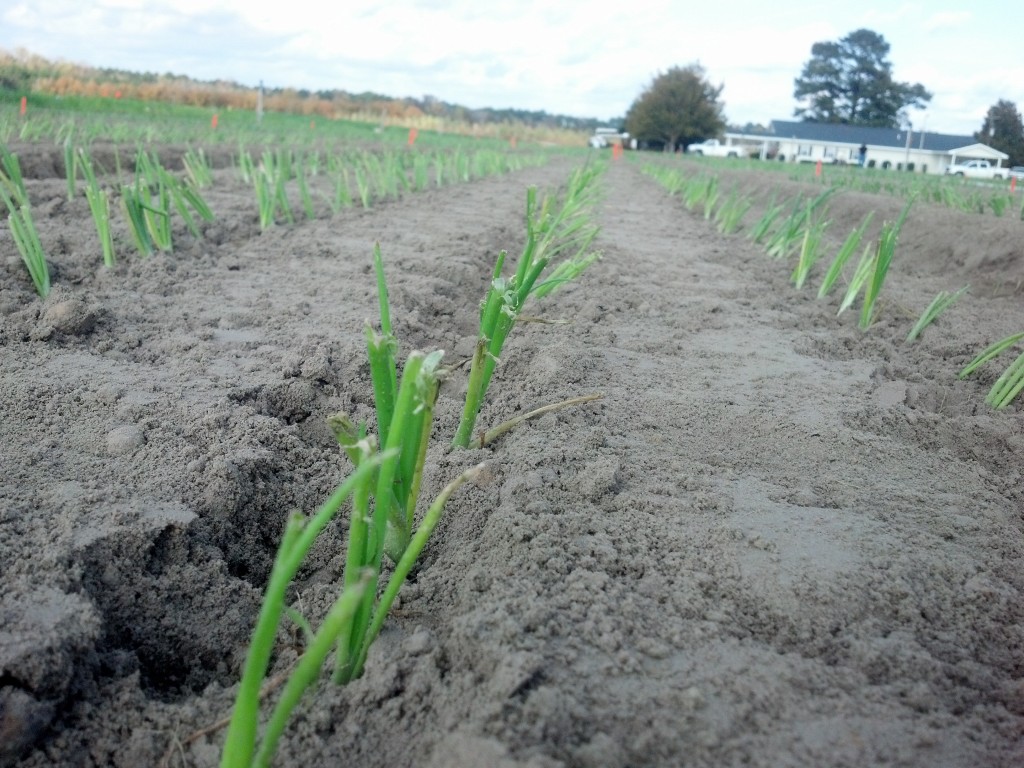I have been scouting around the county and received calls about fertilization on cotton. Most of the cotton I have been looking at is between first square and first bloom. Some is probably going to start blooming in the next two weeks for the earlier planted cotton, and nitrogen requirements will need to be met when looking to maximize yield goals. Here is an excerpt from the UGA cotton handbook written by Dr. Glen Harris UGA fertility expert.
Nitrogen is probably the most important fertilizer used on cotton, yet it is the most difficult to manage. Low N rates can reduce yield and quality while excessive N rates can cause rank growth, boll rot, delayed maturity, difficult defoliation, and poor quality and yield. Total N rates for cotton should be based on soil type, previous crop, growth history, and yield potential. Base N rates recommended by the UGA Soil Testing Lab according to yield goals are listed next.
| Yield Goal (lb lint/A) | Recommended N Rate (lb N/A) |
| 750 | 60 |
| 1000 | 75 |
| 1250 | 90 |
| 1500 | 105 |
These N rates should then be adjusted according to other factors. For example:
Increase N rate by 25% if: Decrease N rate by 25% if:
Deep sandy soil Cotton following peanuts or soybeans
Cotton following cotton Cotton following good stands of winter
History of inadequate stalk growth legumes such as clover or vetch
History of rank or excessive vegetative growth
Yield goals should always be realistic, preferably based on past production records. For N rates above 120 lb/A, cotton should be highly managed in terms of insect control, plant height, and boron fertilization. Total N rates above 120 lb/A should only be needed on deep sands or in special cases of history of inadequate stalk growth or where excessive leaching has occurred. The N rates for 1250 and 1500 lb lint/A yield goals assume irrigation.
The total N rate should always be applied in split applications. Apply 1/4 to 1/3 of the recommended N at planting and the remainder at sidedress. The preplant or at planting N application is critical for getting the crop off to a good start and ensuring adequate N nutrition prior to side-dressing. Sidedress N between first square and first bloom depending on growth and color (toward first square if slow growing and pale green, toward first bloom if rapid growth and dark green). A portion of the sidedress N can also be applied as foliar treatments or through irrigation systems. No N should be soil-applied (either top dressed or through the pivot) after the 3rd week of bloom. Studies have shown that uptake of soil-applied N from by cotton roots is basically ineffective after this crticial point.
There are a number of sidedress nitrogen fertilizer materials that can be used on cotton including liquid UAN solutions, ammonium nitrate and urea. UAN solutions are made up of urea and ammonium nitrate and often contain sulfur (e.g. 28-0-0-5). Ammonium nitrate is losing favor as a sidedress N source for cotton due to higher cost and burn potential. Urea is considered an alternative to ammonium nitrate but is known to be prone to volatilization losses. Volatilization losses can be minimized however by irrigating after a urea application or by use of a urease inhibitor that contains the active ingredient NPBT. Another popular liquid sidedress N source for source for Georgia cotton is “19 %” or 18-0-0-3(S). These sources are derived from a by-product of the Attapulgite clay mining industry in southwest Georgia and are basically “liquid ammonium nitrate and sodium nitrate” (approximately 60 % nitrate and 40 % ammonium with no urea). Replicated, small plot research trials conducted between 2010 and 2012 indicated that 18-0-0-3(S) is comparable to 28-0-0-5(S) in terms of producing cotton yield. For foliar feeding N, feed grade urea is still the product of choice in terms of performaace and cost. Controlled release nitrogen foliar products are also available but usually contain potassium and boron and are less concentrated in N.
If you have any questions please give our office a call at 9125576724.
